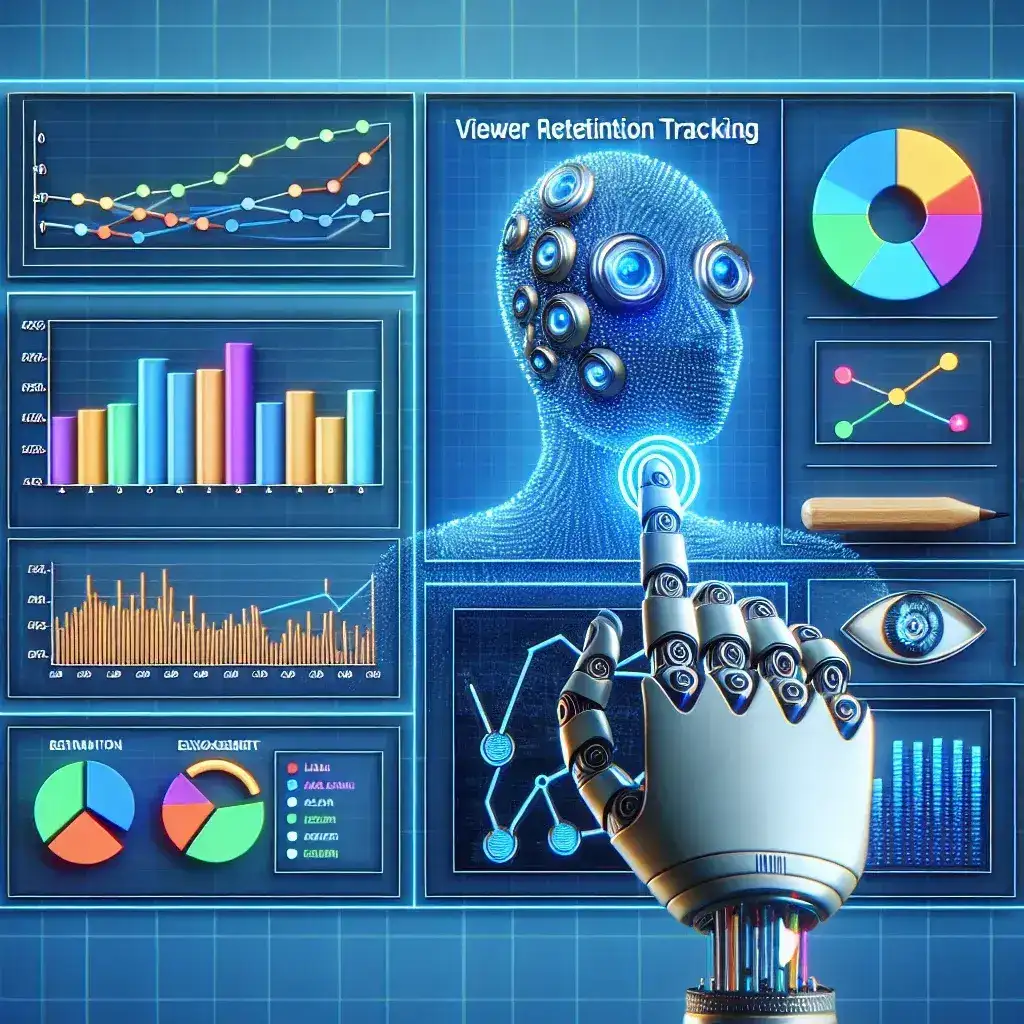Understanding the Revolution in Viewer Analytics
The digital content landscape has undergone a seismic shift in recent years, with artificial intelligence emerging as the cornerstone of sophisticated viewer retention tracking. Content creators, marketers, and platform owners now possess unprecedented capabilities to understand audience behavior patterns, predict engagement trends, and optimize content strategies with remarkable precision.
Traditional analytics methods, while foundational, often provided fragmented insights that required extensive manual interpretation. Today’s AI-powered solutions offer comprehensive, real-time analysis that transforms raw viewing data into actionable intelligence, enabling content strategists to make informed decisions that directly impact audience retention rates.
The Science Behind AI-Powered Retention Analytics
Artificial intelligence algorithms excel at processing vast amounts of viewer data simultaneously, identifying subtle patterns that human analysts might overlook. These sophisticated systems analyze multiple data points including watch time duration, drop-off points, replay frequencies, and engagement interactions to create comprehensive viewer behavior profiles.
Machine learning models continuously evolve by analyzing historical viewing patterns, seasonal trends, and demographic preferences. This adaptive learning capability allows AI systems to predict future viewer behavior with increasing accuracy, providing content creators with invaluable foresight into audience preferences and potential retention challenges.
Key Metrics AI Systems Track
- Average view duration across different content segments
- Audience retention curves and critical drop-off points
- Engagement velocity and interaction patterns
- Cross-platform viewing behavior consistency
- Demographic-specific retention variations
- Content element performance correlation
Implementing AI Analytics Platforms
Successfully integrating AI-powered viewer retention tracking requires careful consideration of platform capabilities, data integration requirements, and organizational objectives. Leading analytics platforms offer comprehensive dashboards that consolidate multiple data streams into intuitive visualizations, enabling teams to quickly identify trends and optimization opportunities.
Modern AI analytics solutions provide real-time monitoring capabilities that alert content managers to sudden changes in viewer behavior patterns. These immediate insights enable rapid response strategies, allowing teams to adjust content delivery, modify promotional approaches, or implement engagement recovery tactics before significant audience loss occurs.
Platform Selection Criteria
When evaluating AI analytics platforms, organizations should prioritize solutions that offer scalable data processing capabilities, customizable reporting features, and seamless integration with existing content management systems. The most effective platforms combine predictive analytics with prescriptive recommendations, guiding content strategy decisions through data-driven insights.
Advanced Behavioral Pattern Recognition
Contemporary AI systems excel at identifying complex viewer behavior patterns that traditional analytics often miss. These sophisticated algorithms analyze micro-interactions, viewing sequence preferences, and content consumption habits to create detailed audience personas that inform targeted retention strategies.
Behavioral pattern recognition extends beyond simple view duration metrics to encompass emotional engagement indicators, content preference evolution, and platform loyalty patterns. This comprehensive analysis enables content creators to develop personalized experiences that resonate with specific audience segments, significantly improving retention rates across diverse demographic groups.
Predictive Modeling Applications
AI-powered predictive models analyze historical data to forecast future viewer behavior, enabling proactive content optimization strategies. These models identify potential churn risks, predict optimal content release timing, and recommend personalization strategies that maximize individual viewer engagement.
Real-Time Optimization Strategies
The integration of AI analytics with content delivery systems enables dynamic optimization strategies that adapt to viewer behavior in real-time. Smart algorithms can automatically adjust content recommendations, modify interface elements, and personalize user experiences based on individual viewing patterns and preferences.
Real-time optimization extends to content creation processes, where AI insights inform editorial decisions, guide production priorities, and influence distribution strategies. Content teams can leverage these insights to develop more engaging narratives, optimize video pacing, and create compelling thumbnails that improve click-through rates and initial engagement.
Automated Response Systems
Advanced AI platforms implement automated response systems that trigger specific actions based on predetermined viewer behavior thresholds. These systems can automatically deploy re-engagement campaigns, adjust content recommendations, or modify user interface elements to address declining retention rates without manual intervention.
Cross-Platform Analytics Integration
Modern audiences consume content across multiple platforms and devices, creating complex viewing journeys that traditional analytics struggle to track comprehensively. AI-powered solutions excel at consolidating cross-platform data, providing unified viewer profiles that reveal complete audience behavior patterns regardless of consumption method or device preference.
Cross-platform integration enables content strategists to understand how viewers interact with content across different environments, identifying optimal distribution strategies and platform-specific optimization opportunities. This holistic approach ensures consistent engagement experiences while maximizing platform-specific retention rates.
Privacy-Conscious Data Collection
Implementing AI-powered viewer retention tracking requires careful attention to privacy regulations and ethical data collection practices. Modern analytics platforms incorporate privacy-by-design principles, ensuring compliance with international data protection standards while maintaining analytical effectiveness.
Responsible AI implementation includes transparent data usage policies, user consent mechanisms, and anonymization protocols that protect individual privacy while enabling valuable aggregate insights. Organizations must balance analytical capabilities with ethical considerations, building trust with audiences through transparent and responsible data practices.
Compliance Framework Development
Establishing comprehensive compliance frameworks ensures that AI analytics implementations meet regulatory requirements while maximizing analytical value. These frameworks should address data collection protocols, storage security measures, and user rights management systems that maintain legal compliance across multiple jurisdictions.
Measuring Success and ROI
Evaluating the effectiveness of AI-powered viewer retention tracking requires comprehensive measurement frameworks that assess both immediate performance improvements and long-term strategic value. Key performance indicators should encompass retention rate improvements, engagement quality enhancements, and revenue impact metrics that demonstrate clear return on investment.
Success measurement extends beyond traditional metrics to include predictive accuracy rates, optimization response times, and strategic decision support effectiveness. Organizations should establish baseline measurements before AI implementation to accurately assess improvement levels and identify areas for continued optimization.
Future Developments and Emerging Trends
The evolution of AI-powered viewer retention tracking continues accelerating, with emerging technologies promising even more sophisticated analytical capabilities. Advanced natural language processing, computer vision integration, and emotion recognition technologies will further enhance understanding of viewer preferences and engagement patterns.
Future developments include real-time sentiment analysis, predictive content creation assistance, and automated optimization systems that require minimal human intervention. These advancing capabilities will enable content creators to develop increasingly personalized and engaging experiences that maximize viewer retention across diverse audience segments.
Preparing for Next-Generation Analytics
Organizations should prepare for next-generation AI analytics by investing in scalable infrastructure, developing data literacy capabilities, and establishing flexible implementation frameworks that can adapt to emerging technologies. Proactive preparation ensures competitive advantages as AI capabilities continue evolving and expanding.
Implementation Best Practices
Successful AI-powered viewer retention tracking implementation requires strategic planning, stakeholder alignment, and gradual deployment approaches that minimize disruption while maximizing analytical value. Organizations should begin with pilot programs that demonstrate value before expanding to comprehensive implementations.
Best practices include establishing clear objectives, defining success metrics, and creating cross-functional teams that combine technical expertise with content strategy knowledge. Regular performance reviews and optimization cycles ensure that AI systems continue delivering value while adapting to changing audience preferences and market conditions.
The transformation of viewer retention tracking through artificial intelligence represents a fundamental shift in how content creators understand and engage their audiences. By leveraging these advanced analytical capabilities, organizations can develop more effective content strategies, improve audience satisfaction, and achieve sustainable growth in an increasingly competitive digital landscape.






Leave a Reply